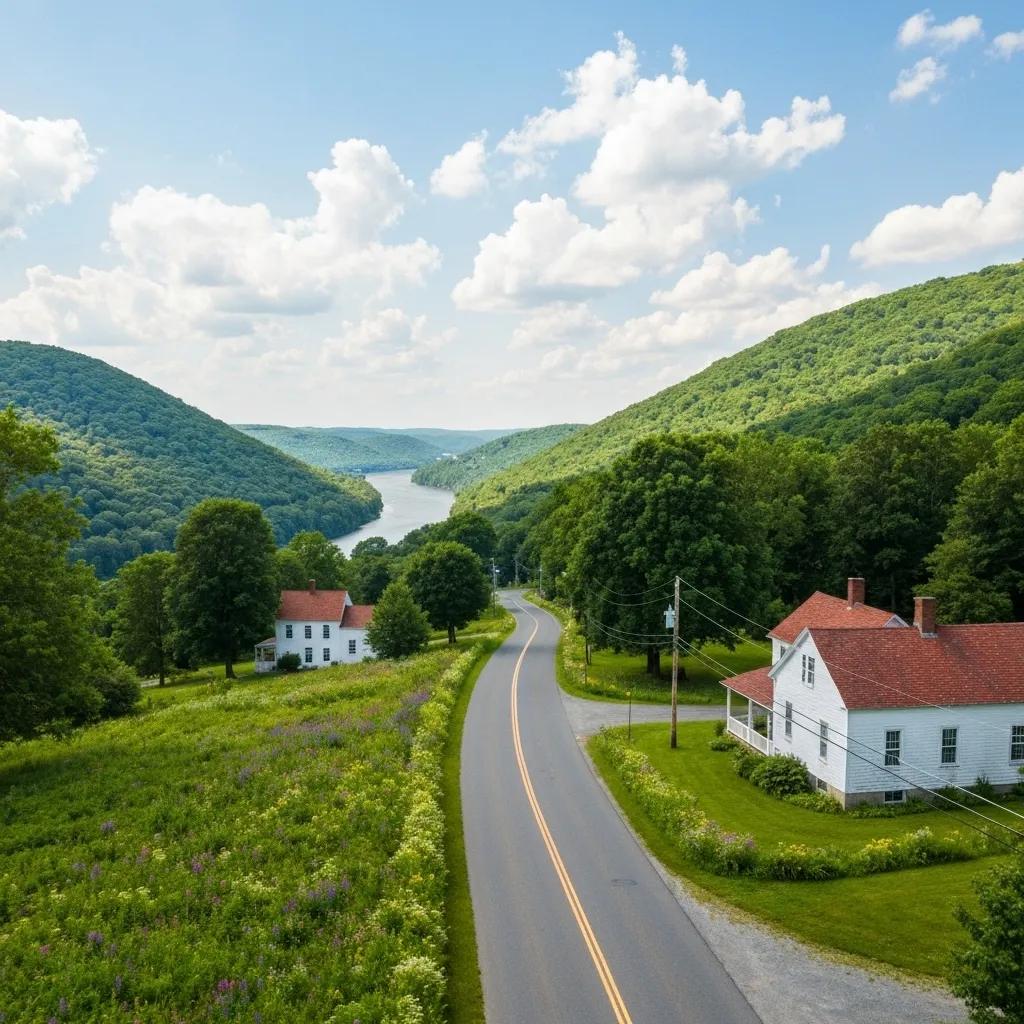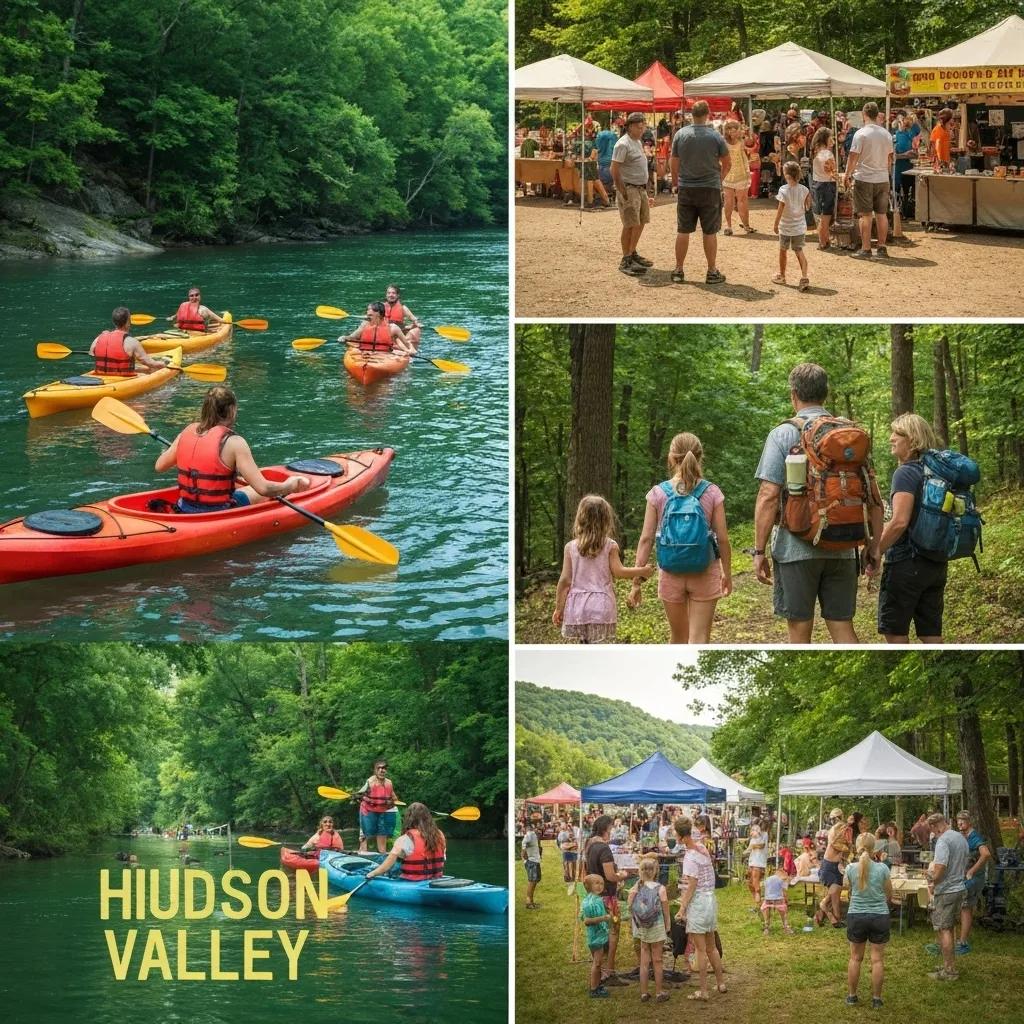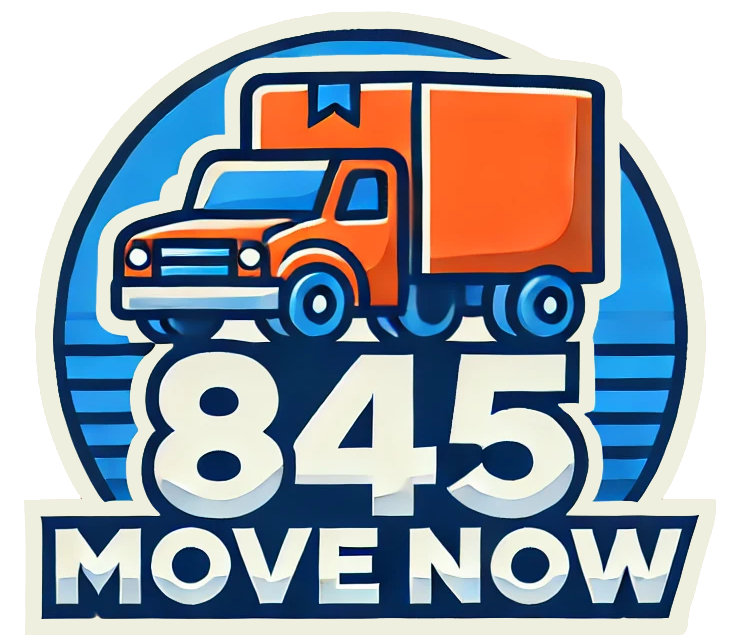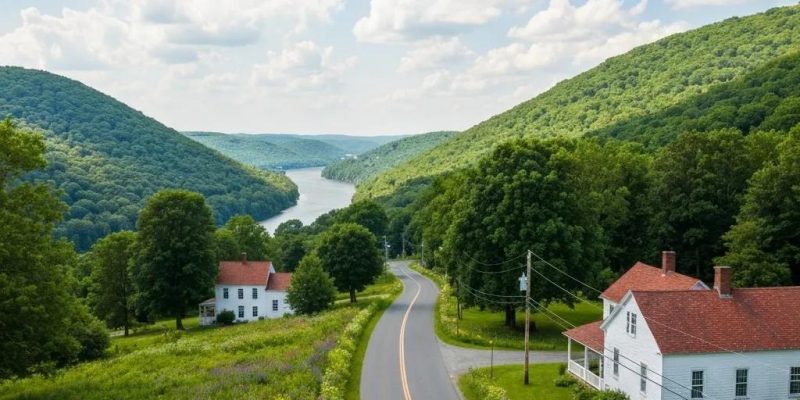
Moving to the Hudson Valley: Your Complete Guide to the Best Places, Cost of Living, Schools, Jobs, and Real Estate
Relocating to the Hudson Valley offers a blend of riverside charm, vibrant communities, and proximity to New York City. This guide delivers essential insights on selecting the ideal town, understanding living expenses, navigating the real estate market, evaluating schools, spotting job opportunities, and planning transportation. It also outlines how 845 Move Now’s local expertise ensures a stress-free move and highlights the lifestyle benefits that make the Hudson Valley an exceptional place to call home.
What Are the Best Places to Live in the Hudson Valley?
Choosing where to settle involves balancing amenities, housing options, culture, and commute. The Hudson Valley features diverse towns—from bustling river cities to quaint villages—with unique character and services that suit families, professionals, and retirees alike.
Which Hudson Valley Towns Offer the Best Lifestyle and Amenities?

- Poughkeepsie – Urban waterfront district, higher education hubs (Vassar, Marist), Metro-North access.
- Beacon – Arts scene, galleries, Walkway Over the Hudson, weekly farmers’ market.
- Kingston – Historic Stockade District, waterfront restaurants, Ulster County government services.
- New Paltz – Outdoor recreation (Mohonk Preserve), college town vibe, organic markets.
- Rhinebeck – Upscale boutiques, Rhinebeck Farmers’ Market, proximity to Dutchess County Fairgrounds.
These towns combine community events, dining varieties, and accessible parks, creating well-rounded lifestyle options for new residents.
How Do Popular Towns Like Poughkeepsie, Beacon, and Kingston Compare?
| Town | Population (Approx.) | Median Home Price | Commute to NYC (Train) | Key Attractions |
|---|---|---|---|---|
| Poughkeepsie | 31,000 | $330,000 | 90 minutes | Walkway Over the Hudson, Marist |
| Beacon | 14,000 | $360,000 | 75 minutes | Dia:Beacon, Main Street galleries |
| Kingston | 23,000 | $310,000 | 110 minutes | Rondout Waterfront, Historic tours |
What Are the Unique Benefits of Smaller Communities Like New Paltz and Rhinebeck?
- Affordable Tranquility – Lower noise levels, scenic trails, and tight-knit neighborhoods.
- Community Events – Seasonal fairs, local theatre productions, and artisan markets.
- Family-Friendly Atmosphere – Excellent public schools, playgrounds, and youth programs.
Residents benefit from countryside living while remaining within reach of urban conveniences, offering an ideal balance for families or those seeking a slower pace.
How Does Local Expertise Help with Moving to Specific Hudson Valley Towns?
Leveraging local knowledge minimizes surprises: understanding one-way street regulations, preferred parking zones, building access requirements, and best loading areas streamlines each move. A detailed view of permit processes and peak traffic periods ensures efficient scheduling. This depth of regional insight transforms a complex relocation into a coordinated transition.
How Much Does It Cost to Live in the Hudson Valley?
Evaluating expenses involves housing, taxes, utilities, and day-to-day necessities. Costs vary by county and community size, so accurate budgeting requires granular data.
What Are the Typical Housing Costs Across Hudson Valley Counties?
| County | Median Home Price | Year-over-Year Change |
|---|---|---|
| Dutchess | $340,000 | +8.2% |
| Ulster | $310,000 | +10.5% |
| Orange | $330,000 | +9.1% |
| Westchester | $550,000 | +6.4% |
| Columbia | $300,000 | +7.8% |
How Do Property Taxes and Utilities Affect Overall Living Expenses?
Property taxes, a significant recurring cost, vary widely:
- Dutchess County: Average 1.83% of assessed value
- Ulster County: Average 1.71%
- Orange County: Average 1.79%
Utilities (electricity, heating oil, water, waste) add $200–$300 per month for a standard single-family home. Factoring tax rates and seasonal utility spikes is critical for accurate household budgeting.
What Are the Affordability Challenges for Families and Seniors?
- Inventory Shortage – Few new developments increase competition and above-asking-price bids.
- Senior Retention – Many long-term residents remain in larger homes, reducing downsizing options.
Identifying cost-effective neighborhoods and exploring assistance programs (veteran, senior tax exemptions) helps mitigate affordability pressures.
How Can You Budget for Moving and Settling in the Hudson Valley?
- Packing Supplies – Boxes, tape, and padding estimated at $200–$400.
- Professional Services – Local move averaging $1,000–$1,500; long-distance moves incur mileage fees.
- Utility Setup – Deposits and connection fees up to $150.
- Cleaning and Repairs – End-of-lease cleaning or minor maintenance, around $250.
Allocating a buffer of 10–15% for unexpected expenses prevents budget overruns and ensures a smooth transition.
What Is the Current Hudson Valley Real Estate Market Like?
The region’s market remains competitive, with low inventory and steady demand driving price growth. Awareness of trends and strategies helps buyers and sellers make informed decisions.
How Have Median Home Prices Changed Recently in the Hudson Valley?
- Ulster County: +25.5% from May 2023 to May 2024
- Dutchess County: +22.3% over the past year
- Orange County: +24.1% year-over-year
Hudson Valley Housing Market Sees Significant Price Increases and Low Inventory
This research directly supports the article’s claims regarding rising housing prices, median home values across counties, and the impact of low inventory on the market.
These sharp rises reflect pandemic-influenced migration patterns and a shortage of starter homes. Buyers must prepare for bidding wars and consider off-peak seasons to gain leverage.
What Are the Best Strategies for Finding a Home in the Hudson Valley?
- Partnering with a local real estate agent for early listings
- Exploring scheduled open houses and virtual tours
- Expanding search radii to adjacent towns for better value
- Setting up automated alerts for new MLS entries
Combining digital tools with on-the-ground visits provides a competitive edge in fast-moving markets.
How Does Low Inventory Impact Homebuyers and Sellers?
- Buyers face quick decision-making and above-asking offers.
- Sellers can capitalize on multiple bids but must coordinate purchases to avoid gaps.
Understanding seasonal inventory cycles—spring peaks versus winter lulls—enables strategic listing and acquisition plans.
What Should You Know About Hudson Valley Property Taxes?
Property taxation varies by municipality and school district:
- Average rates range from 1.5% to 2.2% of assessed value.
- School district levies often represent 60–70% of the total bill.
Reviewing historical tax trends and local budget proposals provides foresight into future liabilities and helps avoid unwelcome surprises.
Which Schools and Educational Opportunities Are Available in the Hudson Valley?
Education quality is a top priority for families relocating. The region offers public districts, private institutions, and higher-education campuses.
What Are the Top-Rated School Districts in the Hudson Valley?
- Spackenkill Union Free (Dutchess) – Top 10% in state assessments
- Hyde Park Central (Dutchess) – STEM and arts integration programs
- Ellenville Central (Ulster) – Above-average graduation rates
- Beacon City School District (Dutchess) – Innovative learning initiatives
Spackenkill and Beacon Among Top-Ranked Hudson Valley School Districts
These districts combine rigorous academics with extracurricular options, making them highly desirable for families.
How Do Local Colleges and Universities Enhance the Region?
- Vassar College (Poughkeepsie) – Renowned liberal arts programs.
- Marist College (Poughkeepsie) – STEM, business, and communications degrees.
- SUNY New Paltz – Affordable state university with strong education and arts faculties.
- Dutchess Community College – Two-year degrees and transfer pathways.
These campuses serve as employment centers and community hubs, enriching local life and supporting lifelong learning.
What Resources Are Available for Families Moving with Children?
- Enrollment Assistance – School district liaisons help with registration and assessments.
- After-School Programs – YMCA, Boys & Girls Clubs, and local recreation departments.
- Special Education Services – Coordinated by Individual Education Plan (IEP) teams in each district.
These support systems ensure a seamless transition for children at each educational level.
How Does Education Influence Choosing the Right Hudson Valley Town?
Proximity to top schools often correlates with higher property values and tax rates. Parents balance district quality with affordability and commute considerations. Mapping school boundaries alongside housing options aligns educational priorities with budget constraints, guiding final town selection.
What Job Opportunities and Economic Trends Exist in the Hudson Valley?
The region’s economy blends traditional manufacturing, healthcare, education, and emerging tech sectors, creating diversified employment prospects.
Which Industries Are Growing in the Hudson Valley Region?
- Health Services – Hospitals and outpatient clinics adding nursing and allied-health roles.
- Professional & Business Services – Accountants, legal, and consulting firms scaling local offices.
- Leisure & Hospitality – Tourism growth fuels demand for event planners, hospitality staff, and chefs.
- Private Education – Charter schools and specialized academies requiring administrative and instructional staff.
What Are the Most In-Demand Jobs and Skills?
- Computer Systems Analysts – IT expertise to modernize business operations.
- HVAC Technicians – Environmental controls and energy-efficient installations.
- Licensed Practical Nurses (LPNs) – Skilled caregiving in nursing homes and clinics.
- Automotive Technicians – Servicing fleet vehicles and personal transportation.
Acquiring certifications and specialized training increases employability and salary prospects.
How Does the Hudson Valley Job Market Compare to NYC?
While average salaries are lower than Manhattan, cost-of-living savings and shorter commutes offset the difference. Many residents commute into NYC for higher wages, then return to more affordable housing. Remote work opportunities also allow professionals to earn city-level salaries while living in the Hudson Valley.
What Is the Economic Outlook for New Residents?
As of January 2024, unemployment rates hovered between 3.5% and 4.0%, indicating a healthy job market. Private-sector employment grew to 850,600 jobs by mid-2025, with consistent expansions in education, healthcare, and professional services.
Hudson Valley Maintains Low Unemployment Amidst Private Sector Job Growth
This citation verifies the article’s statements about the healthy job market, specific unemployment rates, and the key industries contributing to employment growth in the Hudson Valley.
This positive trajectory suggests stable prospects for incoming workers.
How Is Transportation and Connectivity in the Hudson Valley?
Commuting options range from rail services to regional highways. Understanding transit infrastructure is vital for daily routines and long-distance planning.
What Public Transportation Options Are Available in Key Towns?
- Metro-North Railroad – Lines at Poughkeepsie, Beacon, Cold Spring, Hudson, offering direct service to Grand Central.
- Trailways Buses – Regional connections between Kingston, New Paltz, and Newburgh.
- Ulster County Area Transit (UCAT) – Local routes servicing Kingston area.
- Dutchess County Public Transit – Fixed-route buses linking Poughkeepsie to nearby communities.
How Long Are Typical Commutes to NYC and Surrounding Areas?
- Poughkeepsie to Grand Central: 90 minutes
- Beacon to Grand Central: 75 minutes
- Hudson to Grand Central: 112 minutes
Bus ride times vary by route but generally range from 60 to 120 minutes. Scheduling flexibility helps commuters plan efficient door-to-desk journeys.
What Are the Road and Parking Considerations for New Residents?
Highways (I-87, Route 9, Taconic State Parkway) handle daily traffic spikes. Many downtown areas offer municipal lots and metered parking. Understanding permit requirements in historic districts avoids fines and towing incidents. Carpool lanes on I-87 reduce peak-hour delays for multiple-occupancy vehicles.
How Does Transportation Affect Daily Life and Moving Logistics?
Access to reliable transit influences home location and moving timing. Coordinating truck arrivals outside rush hours prevents delays. Awareness of railroad grade crossings and peak commuter schedules ensures on-time deliveries and safe unloading in congested zones.
How Can 845 Move Now Help with Your Hudson Valley Relocation?
Engaging a local professional simplifies every phase of your move, from packing to final setup. With deep regional insight, 845 Move Now ensures a seamless transition.
What Local Moving Services Does 845 Move Now Provide?
- Household Moves – Single-family, apartment transitions with full packing and unpacking.
- Commercial Relocations – Office fit-outs, equipment handling, and specialized project management.
- Senior Moves – Downsizing assistance, estate clean-outs, and compassionate coordination.
Their specialists know local streets, parking restrictions, and building protocols to expedite each relocation.
How Does 845 Move Now Support Long-Distance and Commercial Moves?
Long-distance moves include door-to-door transport across state lines with GPS-tracked vehicles and climate-controlled trailers. For corporate clients, 845 Move Now provides project managers who liaise with property managers, IT teams, and vendors to align schedules and minimize downtime.
What Packing and Storage Solutions Are Available?
- Full-Service Packing – Materials, wrapping, custom crating for antiques and artwork.
- Short-Term Storage – Secure, climate-controlled facilities for items awaiting permanent placement.
- Long-Term Warehousing – Palletized inventory management for commercial excess or seasonal goods.
These options accommodate complex inventories and deliver peace of mind during transitional periods.
How Can You Get a Free Moving Quote and Plan Your Move?
Request a tailored estimate online or by phone. A local estimator visits your property to assess scope and provides a detailed breakdown of services, timelines, and transparent pricing. To explore 845 Move Now’s full service catalog and coverage areas, consult the Sitemap – 845 Move Now for comprehensive details.
What Are the Lifestyle and Quality of Life Benefits in the Hudson Valley?
Beyond practical considerations, the Hudson Valley offers enriching experiences year-round, blending nature, culture, and community engagement.
What Outdoor Activities and Cultural Attractions Can You Enjoy?

- Hiking at Mohonk Preserve or Minnewaska State Park
- Kayaking on the Hudson River or Ashokan Reservoir
- Visiting cultural venues like Storm King Art Center, Bardavon Opera House
- Seasonal festivals: Dutchess County Fair, Kingston WritersFest
How Do Hudson Valley Seasons Affect Year-Round Living?
- Spring: Blooming orchards, farmers’ markets reopening.
- Summer: Outdoor concerts, river swims, vineyard tours.
- Autumn: Foliage drives on Route 9W, harvest meals at farm-to-table restaurants.
- Winter: Skiing at Hunter Mountain, cozy fireside events in historic inns.
What Are the Pros and Cons of Living in the Hudson Valley?
- ProsScenic landscapes and open spaceStrong community networks and local businessesProximity to NYC with comparatively lower living costs
- ConsSeasonal weather extremes (snow removal, spring flooding)Property taxes above national averagesLimited late-night transit options in rural areas
How Does the Hudson Valley Compare to Urban Living in NYC?
- More living space and green areas
- Slower pace and lower noise levels
- Tight-knit neighborhoods versus anonymous city blocks
- Easier parking and shorter school-dropoff times
Conversely, residents trade 24/7 nightlife and density of specialized services for a more relaxed, nature-infused lifestyle.
What Are Common Questions About Moving to the Hudson Valley?
What Are the Best Towns to Live in the Hudson Valley?
Top picks include Poughkeepsie, Beacon, Kingston, New Paltz, and Rhinebeck—each offering distinct amenities, cultural scenes, and housing profiles to suit diverse preferences.
Is the Hudson Valley Expensive to Live In?
Living costs are moderate compared with NYC, with median home prices between $300,000 and $550,000 and property tax rates averaging 1.7–1.9%. Utility and daily expenses align with suburban norms.
What Is the Job Market Like in the Hudson Valley?
A healthy job market features growth in healthcare, education, professional services, and hospitality. Unemployment rates around 3.5–4.0% and rising private-sector employment indicate strong opportunities for new residents.
How Are Schools Rated in the Hudson Valley?
Several districts rank in the top 10% statewide, including Spackenkill Union Free and Hyde Park Central. The presence of Vassar, Marist, and SUNY institutions further enriches the educational landscape.
What Transportation Options Are Available?
Comprehensive transit includes Metro-North rail service to Manhattan, regional bus networks (Trailways, UCAT, Dutchess County Transit), and major highways (I-87, Route 9, Taconic Parkway) facilitating both local and long-distance travel.
Relocating to the Hudson Valley means embracing scenic beauty, vibrant communities, and numerous amenities while benefiting from strong schools, growing job markets, and accessible transit. With detailed planning around costs and neighborhood selection—and trusted support from a regional moving expert—you can transition smoothly into your new Hudson Valley lifestyle. Start exploring today to find the community that matches your priorities and secure seamless moving services that put local knowledge to work for you.

